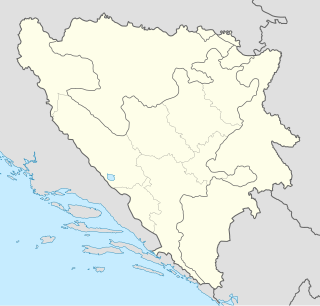The 150th Fighter-Bomber Aviation Regiment was an aviation regiment established in 1952 as part of the SFR Yugoslav Air Force. The regimental headquarters was stationed at Niš Airport until the regiment was disbanded in 1958.
The 40th Fighter Aviation Regiment was established in 1955 as part of the SFR Yugoslav Air Force. The regiments' command was stationed at Zagreb airport until it was disbanded in 1959.

The 83rd Fighter Aviation Regiment was an aviation regiment established in 1944 as 1st Yugoslav Fighter Regiment formed from Yugoslav partisan aviators on training in Soviet Union.
The 81st Support Aviation Regiment was an aviation regiment established in 1944 as 2nd Yugoslav Assault Regiment formed from Yugoslav partisan aviators on training in Soviet Union.
The 104th Training Aviation Regiment was an aviation regiment established in 1945 as 1st Training Aviation Regiment as part of the SFR Yugoslav Air Force.
The 267th Aviation Regiment of School of Reserve Officers was an aviation regiment established in 1951 as part of the SFR Yugoslav Air Force. The regiments was stationed at Pančevo and Novi Sad airports.
The 94th Fighter Aviation Regiment was an aviation regiment established in 1944 as 111th Fighter Aviation Regiment formed from Yugoslav partisan aviators, trained and equipped by Soviet Air Force.
The 96th Fighter-Bomber Aviation Regiment was established in 1944 as the 423rd Assault Aviation Regiment, It was formed from Yugoslav partisan aviators and trained and equipped by the Soviet Air Force.
The 88th Fighter-Bomber Aviation Regiment was an aviation regiment established in 1947 as 43rd Bomber Aviation Regiment.
The 184th Reconnaissance Aviation Regiment was an aviation regiment established in 1948 as the Night Bomber Aviation Regiment, then the 184th Light Night Bomber Aviation Regiment, before adopting its final name from 1952 until its disestablishment in 1966. It was equipped with a number of reconnaissance aircraft, from the Soviet-made Polikarpov Po-2 to the North American F-86D Sabre.
The 185th Fighter-Bomber Aviation Regiment was established in 1949 as the 185th Mixed Aviation Regiment as part of the SFR Yugoslav Air Force.
The 82nd Aviation Brigade was an aviation regiment established in 1945 as 42nd Bomber Aviation Regiment.
The 117th Fighter Aviation Regiment was a unit established in 1944 as the 112th Fighter Aviation Regiment. It was formed from Yugoslav partisan aviators, who were trained and equipped by the Soviet Air Force.
The 111th Helicopter Regiment was a unit established in 1944 as the 422nd Assault Aviation Regiment.
The 107th Mixed Aviation Regiment was an aviation regiment established in 1944 as 421st Assault Aviation Regiment.
The 105th Fighter-Bomber Aviation Regiment was an aviation regiment established in 1946 as 3rd Training Aviation Regiment as part of the Yugoslav Air Force.
The 245th Fighter-Bomber Aviation Squadron was an aviation squadron of Yugoslav Air Force formed in 1953 at Batajnica airfield as Training Squadron of 44th Aviation Division.
The 7th Aviation Corps was an aviation corps established in 1953. It was formed by order from February 5, 1953, with command in Zemun as join unit composed from three aviation divisions and one aviation technical division. Corps was disbanded by order from June 27, 1959, with the "Drvar" reorganization of the Air Force.
The 44th Aviation Division was a unit originally established in 1945 as the 3rd Aviation Fighter Division.
The 9th Air Command was a joint unit of Yugoslav Air Force.







